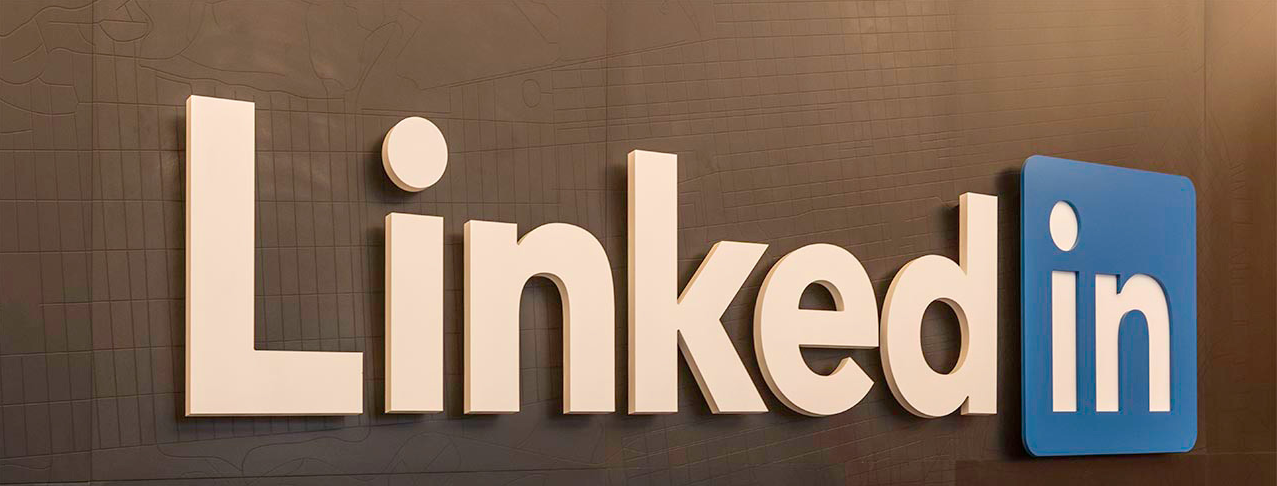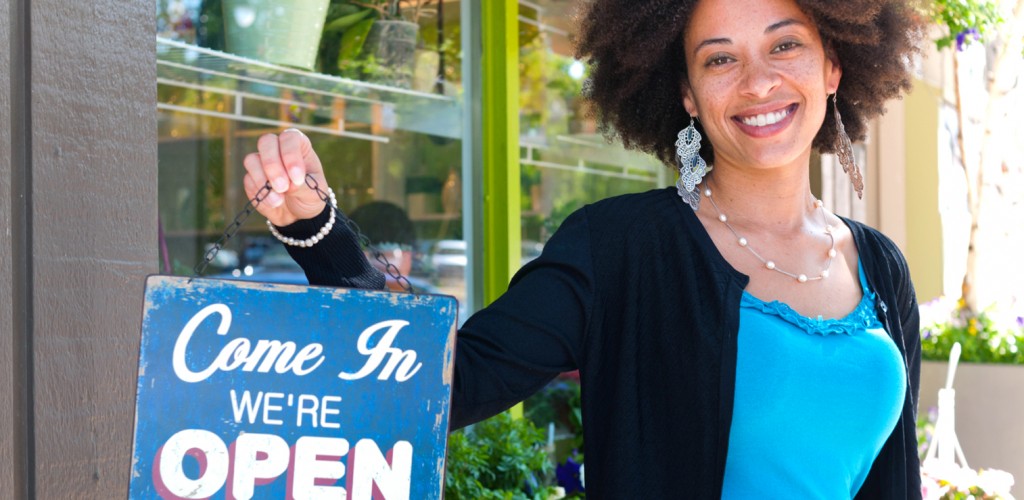Do you want to expand your LinkedIn network?
Interested in ways to find and attract quality connections?
Growing your LinkedIn network helps establish you as an expert in your field and extends your reach and exposure.
Why a Large Network Matters
The number of connections that you have on LinkedIn matters. Remember, the more first-degree connections you have, the more second- and third-degree connections you have, making you literally one connection away from millions of people.
That’s important because LinkedIn is a humongous search engine in which you’ll only appear in your first, second, and third-degree connections’ searches. In other words, if you’re not connected with individuals at these three levels, you WILL NOT come up in their search results. Only those three levels will show up in your searches.
If you want to be found on LinkedIn, practically build your number of the first-degree connections. This will exponentially populate the likelihood that LinkedIn search algorithms will find you and place you near the top of search results.
With a shown below image in the left column area, you can see how the number of connections grows for each relationship level.
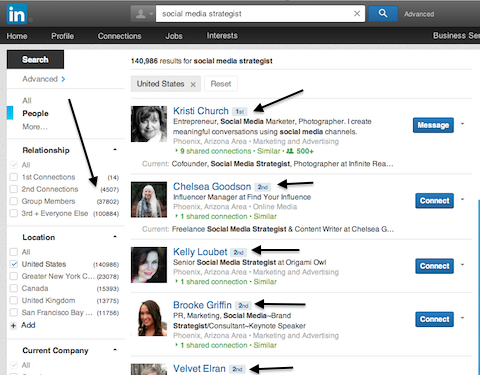
The bottom line of managing LinkedIn is that you only need to show the 500+ mark next to your profile and you would be considered a part of the elite expert tier. People who see your profile will know you use LinkedIn to do business, add value and connections. Here are some ways to start increasing your Linkedin network.
1. Post Status Updates Daily
It’s vital to be active on LinkedIn by starting to post status updates everyday. Think of your LinkedIn updates the same way as any social media posting. Make sure they add value, talk about your business, and include a call to action.
When you consistently stay in the feeds of your connections, there are more opportunities for them to comment, like, and share your posts. The interactions would introduce you to their connections and bring you to grow your network. When people are sharing and commenting on your stuff, it’s social proof that you’re an expert in your field.
2. Engage with Your Connections’ Updates
Review your LinkedIn page regularly, share, comment on, and like other people’s updates and long-formed posts.
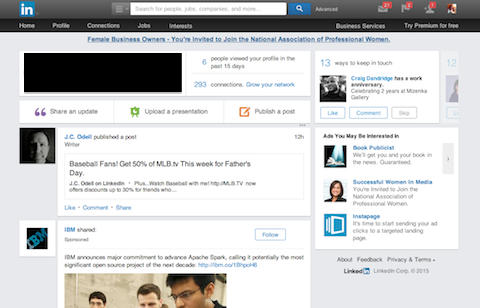
Start relationships with new connections by commenting on their updates. Catch eye audiences by joining conversations on popular posts in your niche. This interaction lets people know you exist and gives you more visibility and activities. Some of these people might want to know more about you, which can lead to new connections.
3. Personalize Connection Requests
Review LinkedIn’s suggested connections at least a few times a week. Try to find people in your industry or niche and personally connect with them. Try to connect with two or three people each time.
When you send a connection request, personalize it in some way for that person. How did you meet? How do you know him or her? Why do you want to connect? Here’s an example of a simple but personal connection request you can tweak and reuse.
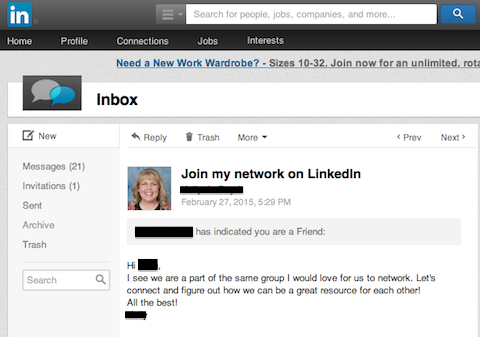
Personalized connection requests increase more chances for you to have people approve your requests and give you better chances to open sale marketing.
4. Add Your LinkedIn URL to Your Email Signature
Your LinkedIn profile will represent you in many ways such as a resume, a testimonial, a social proof, a portfolio of projects/clients, and proof of expert value. They are all in one convenient place. Including in your email signature, Linkedin URL can help you land on more recognition platforms professionally.
- First, you need to create your LinkedIn vanity URL, which is a clickable link that’s easy to recognize and easy to remember.
- In the Contact Info section of your profile, click the gear icon next to your LinkedIn URL.
- Then on the next page, look for the Your Public Profile URL section, where you can make changes.
- Once you have your vanity URL, add it to your email signature to make it easy for people to connect with you. Ensure to add the URL to your business card as well.
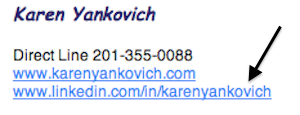
5. Join and Participate in Groups
Be active to search for new LinkedIn groups to join each month. Then, make sure you engage with each group often by commenting, asking questions, and liking other people’s comments ideally everyday.
Being in a group is a great opportunity to do market research, to post links to your updates, to get more views, and to engage with others in your niche, as well as those who aren’t. When people see you in groups and interact with you over time, they’ll be more willing to connect. You might even find potential clients or business partners through a group.
To find groups to join, enter relevant keywords into the LinkedIn search box. Once you find and join a group, participate by starting a discussion or asking a question. Be sure to join both big and small groups. Also, consider creating your own group. This brings you instant credibility because people like to network with experts and other well-connected people. When people join your group, they’ll likely want to connect with you, who is the group owner. They already know who you are and like what you have to say and present.
6. Add Keywords to Your Profile
To make it easy for people to find you by adding keywords to your LinkedIn profile. The three main areas to focus on are your headline, summary, and experience sections. All of these sections are searchable. Adding keywords will lead to more views, make you more searchable, and increase the potential for new connections.
When creating these sections, be creative to tell stories, use every character allowed, and work in relevant keywords that people will search for. For example, if you run your own business, you might be called president or CEO. Let 's think about how many people will actually search for those terms? Instead, use keywords that describe what you do as in the headline below.
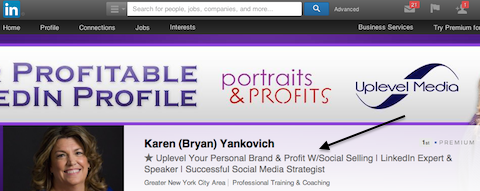
7. Leverage Local Networking Groups
If you belong to a local networking group, look through your membership directory and send LinkedIn connection requests to individual members. Even if you don’t remember meeting someone in person, use your shared real-world connection to personalize your connection request and start to get to know that person online.
For example, you could say something like “We’re both members of (local group name), and I would love to connect with you.” Then head to your next networking meeting newly armed with great networking info. Search for local group members in LinkedIn groups. You may find them there as well.
8. Post Content to LinkedIn’s Publishing Platform
LinkedIn has a publishing platform that makes it easy to publish attractive posts, look like an expert in a professional format.
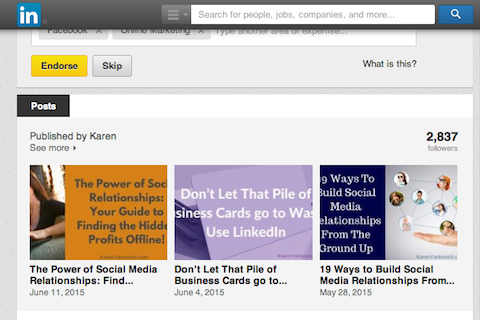
One of the main benefits of publishing platform is that your posts are seen by the entire LinkedIn community, not just your connections, which increases your exposure. Getting recognized by a wild ranged audience will help you build your network by reaching the fourth layer and more. Make sure you publish at least a few times a month to keep your content fresh and decent. If you have no ideas what to publish, consider repurposing your blog posts or newsletter content.
Set a goal to try at least one or two of these tips each week. You’ll be able to track your success as your number of connections starts to march toward 501+ and beyond.

